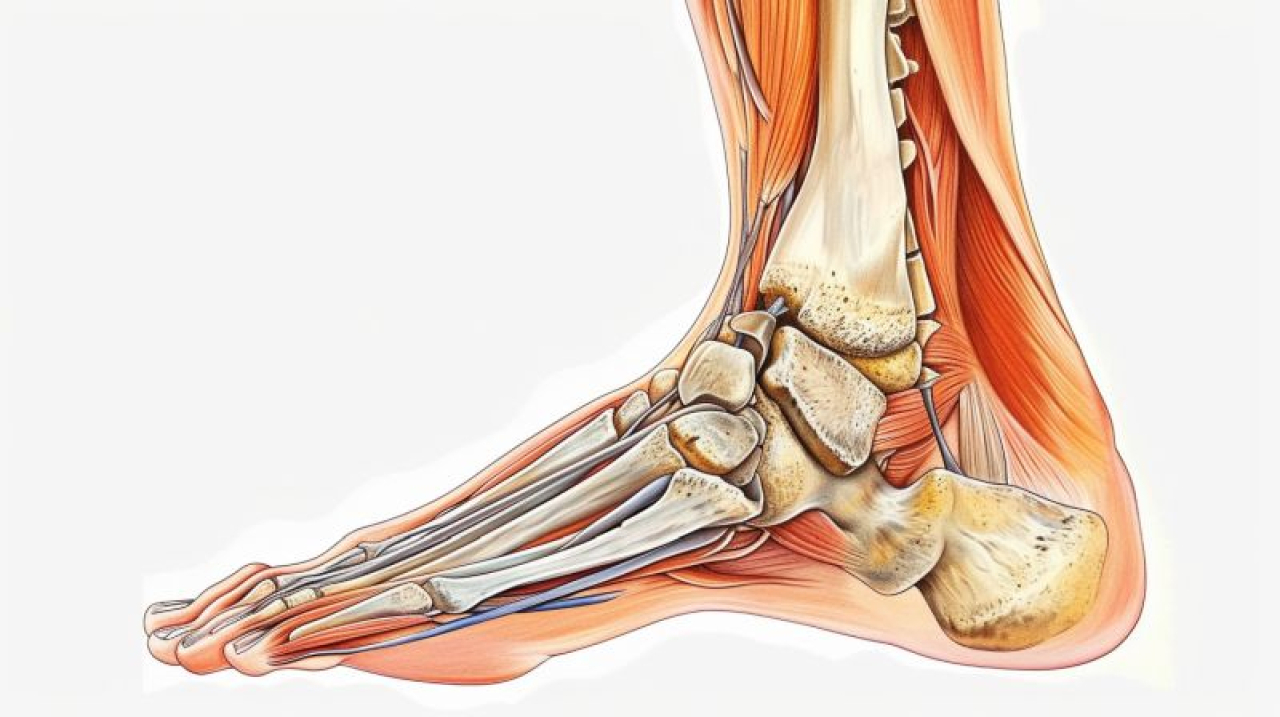The Essential Role of Podiatry in Foot and Ankle Health
Podiatry, often referred to as chiropody in certain regions, is a specialized branch of medicine dedicated to the diagnosis, treatment, and prevention of conditions affecting the feet, ankles, and lower extremities. From routine foot care to complex surgical interventions, podiatrists play a vital role in promoting mobility, alleviating pain, and improving the overall quality of life for individuals of all ages. In this article, we'll explore the multifaceted role of podiatry, shedding light on the diverse conditions treated and interventions employed by these highly skilled healthcare professionals.

Foot Assessment and Diagnosis
At the core of podiatry practice lies the thorough assessment and diagnosis of foot and ankle conditions. Podiatrists possess specialized knowledge of biomechanics, anatomy, and pathology related to the lower limbs, allowing them to identify and evaluate a wide range of issues. From common ailments like bunions, corns, and ingrown toenails to more complex conditions such as plantar fasciitis, Achilles tendonitis, and diabetic foot ulcers, podiatrists employ a combination of clinical examination, imaging studies, and diagnostic tests to formulate accurate diagnoses and tailor treatment plans to meet the individual needs of each patient.

Treatment Modalities
Podiatrists utilize a variety of treatment modalities to address foot and ankle conditions, ranging from conservative measures to surgical interventions. Conservative treatments may include orthotic therapy, which involves the custom design and fabrication of shoe inserts to correct biomechanical imbalances, alleviate pain, and enhance foot function. Additionally, podiatrists may employ physical therapy techniques, such as stretching exercises, manual therapy, and gait analysis, to improve musculoskeletal alignment and prevent further injury.
For acute injuries or conditions resistant to conservative management, podiatric surgery may be recommended. Common surgical procedures performed by podiatrists include bunionectomy, hammertoe correction, neuroma excision, and Achilles tendon repair. With advancements in surgical techniques and technology, many procedures can now be performed on an outpatient basis, minimizing downtime and facilitating faster recovery.
Diabetic Foot Care
One area in which podiatrists play a critical role is in the management of diabetic foot complications. Diabetes can lead to a range of foot problems, including peripheral neuropathy (nerve damage), peripheral arterial disease (poor circulation), and foot ulcers. Left untreated, these issues can result in serious complications such as infection, gangrene, and even limb amputation. Podiatrists are trained to assess diabetic foot health, identify risk factors, and implement preventive strategies to minimize the likelihood of complications.
Routine foot examinations, vascular assessments, and education on proper foot care are essential components of diabetic foot management. Podiatrists may also provide guidance on footwear selection, wound care techniques, and strategies to optimize blood sugar control. By taking a proactive approach to diabetic foot care, podiatrists help individuals with diabetes maintain foot health, prevent complications, and preserve mobility.
Sports Podiatry
Athletes and active individuals often encounter foot and ankle injuries related to sports and physical activity. There are specific clinics, such as AppliedMotion, which have dedicated podiatrist team specialising in sports podiatry. They in the assess and treat of those very specific conditions, aiming to facilitate optimal performance and prevent recurrent injuries. Whether it's addressing overuse injuries like stress fractures and Achilles tendonitis or providing biomechanical analysis and orthotic prescription to improve athletic mechanics, sports podiatrists play a vital role in keeping athletes on their feet and in the game.
Additionally, sports podiatrists may offer advice on footwear selection, training regimens, and injury prevention strategies tailored to the specific demands of each sport or activity. By addressing underlying biomechanical issues and optimizing foot function, sports podiatrists help athletes achieve peak performance while reducing the risk of injury and enhancing overall athletic longevity.

Geriatric Foot Care
As individuals age, they may experience changes in foot structure, function, and skin integrity that require specialized care. Geriatric podiatrists focus on addressing the unique foot care needs of older adults, including managing chronic conditions such as arthritis, osteoporosis, and peripheral vascular disease. Podiatrists play a crucial role in preventing falls and promoting mobility among older adults by addressing foot pain, deformities, and balance issues.
In addition to routine foot care services such as nail trimming, callus reduction, and wound care, geriatric podiatrists may provide education on foot hygiene, footwear selection, and fall prevention strategies. By addressing foot-related issues proactively, podiatrists help older adults maintain independence, mobility, and overall quality of life as they age.
In conclusion, podiatry plays a pivotal role in promoting foot and ankle health, addressing a wide range of conditions that impact mobility, comfort, and overall well-being. From routine foot care to advanced surgical interventions, podiatrists employ a holistic approach to diagnosis and treatment, tailored to meet the unique needs of each patient. Whether managing chronic conditions like diabetes and arthritis, treating acute injuries, or optimizing foot function for athletes and active individuals, podiatrists are dedicated to improving quality of life and enhancing mobility for individuals of all ages. As awareness of the importance of foot health continues to grow, podiatry will remain an indispensable specialty, providing essential care to patients worldwide.
-
Stand Out with the Best eBay Templates and Boost Your Sales

Selling on eBay has never been easier — and at the same time, never more competitive. With thousands of new listings added every day, simply having a good product isn’t always enough. Shoppers have endless choices at their fingertips, and they're often making split-second decisions based on how a listing looks and feels. That's why presentation is everything.
-
ADU Builders Bay Area - Delivering Tailored ADU Solutions

Accessory Dwelling Units (ADUs), widely known as granny flats, guest houses, backyard suites, or secondary dwellings, are quickly becoming an integral part of housing solutions throughout the Bay Area. Driven by supportive housing regulations and increasing demand for affordable residential options, ADU construction has surged dramatically.
-
How to Protect Your Car During Winter Shipping

Winter car shipping presents unique challenges due to harsh weather conditions such as snow, ice, and extreme cold. Whether you are relocating, selling a car, or transporting a vehicle to a different state, ensuring proper vehicle protection is crucial. Failing to take necessary precautions can result in damage, mechanical issues, or delays.
- What is Device as a Service?
-
How to Properly Double Cleanse for Radiant Skin

Double cleansing is a game-changer in skincare, ensuring that your skin is thoroughly cleansed from impurities, makeup, and excess oils. This two-step face wash routine helps prevent breakouts, improves skin texture, and enhances the absorption of skincare products. If you’ve ever wondered how to properly double cleanse or which is the best cleanser to use, this guide will walk you through everything you need to know.


